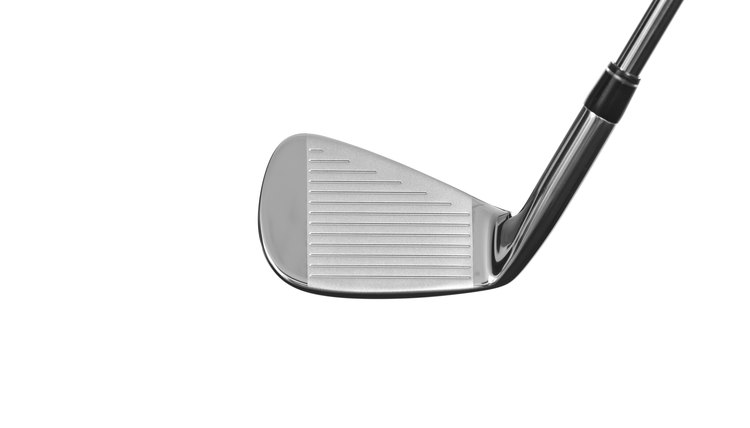Differences Between the D4 and D2 Swing Weight

A golf club’s swing weight measures its "resistance to being swung in a circle,” according to Leaderboard.com. Swing weight does not measure a club’s total weight, but rather its distribution. Indeed, two clubs that weigh the same may have different swing weights. For example, if one of the identically-weighted clubs has a heavier head weight, it will have a greater swing weight. This swing weight is important for golfers as they try to control ball flight, swing speed, club head speed and most importantly how the club feels.
Swing Weight System

The swing weight scale was developed in the 1920s by club maker Robert Adams, although some credit Kenneth Smith, who developed the fulcrum scale used to measure swing weight. While the scale is basically arbitrary, it has survived to become the standard. The swing weight scale places clubs in swing weight ranges with letter designations -- A through F with A being the lightest and F being the heaviest. Each letter is then subdivided into tenths -- from zero tenths to nine tenths. The greater the letter or number, the heavier the club’s swing weight.
Therefore, a club with a swing weight of D1 is heavier than a club with a C1 swing weight, and a D4 club has a slightly greater swing weight than a D2 swing weight. A typical men’s club has a swing weight of about D0, while the standard swing weight for a women’s club is approximately C6.
Swing Weight Elements

A club’s swing weight is affected by the weight of its three main components -- the head, shaft and grip end -- as well as the club shaft’s length and balance point. Altering any of these five items will change the club’s swing weight. These swing weight points have very small weight changes from club to club but these spec differences add up.
Changing from D2 to D4
A quick and easy way to increase a club’s swing weight is to add lead tape to the club head. Adding tape to the grip weight will decrease the swing weight to a lighter swing weight. The precise amount of increase or decrease will depend on the club’s overall characteristics. As a general rule, however, to increase swing weight from D2 to D4, add four 2-inch-long strips of 1/2-inch-wide lead tape to the club head.
To increase swing weight from a D2 to D4 driver you can add about 4 grams of weight to the club head, subtract 10 grams of weight from the butt end of the club or lengthen the driver shaft by 1/3 inch. This is because lengthening the golf shaft causes the weight to move further from the club’s fulcrum point. Altering the swing weight by changing the shaft’s weight is a little trickier, but you will increase the swing weight by approximately one unit for each 9 grams of weight you add to the shaft. You can do this by switching from a graphite shaft to a heavier shaft.
Matching Swing Weights
Some PGA golfers and club fitters believe swing weights should remain fairly consistent throughout a player’s set of clubs, so each will have a similar feel in the downswing during your golf swing. Many golf forums believe the driver and fairway woods should have the lowest swing weight, with the short irons, putter and wedges having slightly heavier swing weights. However the correct swing weight is based on personal preference. If you like a driver with a higher swing weight, go for it.
Writer Bio
M.L. Rose has worked as a print and online journalist for more than 20 years. He has contributed to a variety of national and local publications, specializing in sports writing. Rose holds a B.A. in communications.
